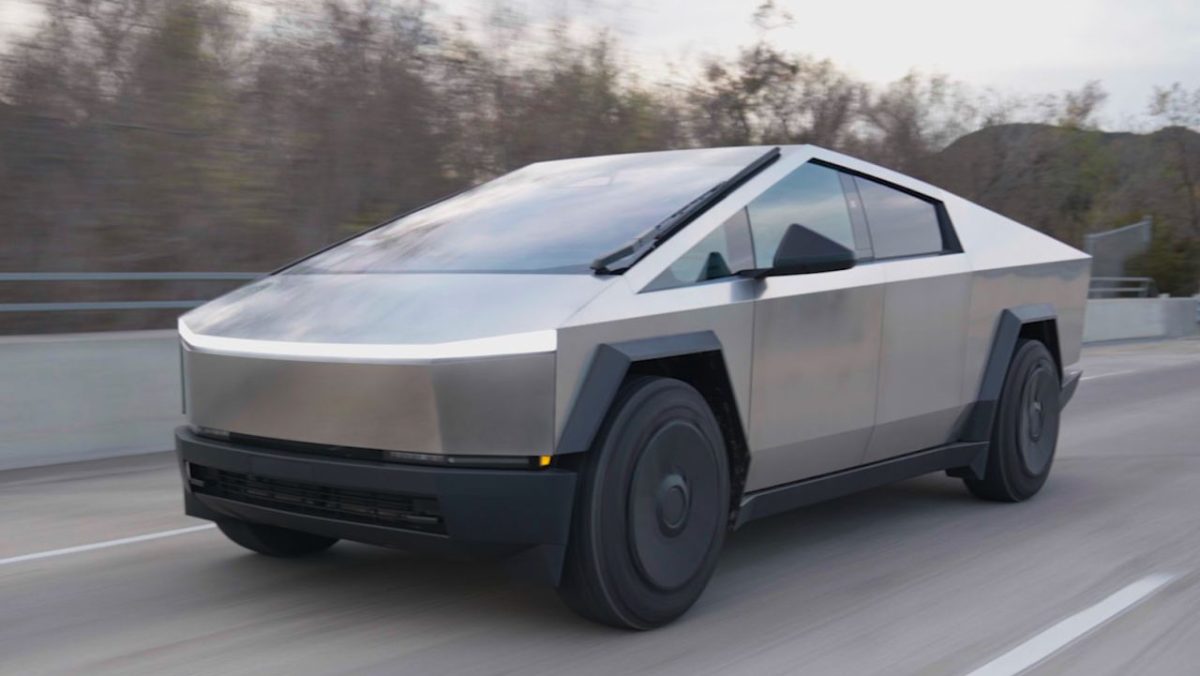In November 2019, a demonstration hosted by Tesla CEO Elon Musk was held in Los Angeles. The convention’s main selling point was the unveiling of a new electric vehicle, now universally recognized by motorists and pedestrians alike as the Cybertruck. The vehicle immediately garnered attention, whether for its unconventional metallic design, resembling a spaceship from a pulpy science fiction epic, or for the highly publicized mishap involving the shattering of the Cybertruck’s proclaimed bulletproof windows when Musk attempted to demonstrate its durability. But is this bizarre metallic construct of Musk’s design a vehicle that could define our future or merely an example of a monstrously designed behemoth unfit for the roads?
Let’s start with one of the cars most publicized features: its durability. The official Cybertruck website boasts that the truck is covered with an “ultra-hard, stainless steel exoskeleton to reduce dents, damage and corrosion,” with Musk himself even claiming that the vehicle would be “literally bulletproof to a nine-millimeter handgun.” However, as has been observed through numerous internet tests, the durability of this exoskeleton is quite variable. Some tests showed bullets passing through the exterior of the car, while others ricocheted off the car’s alloy in spectacular fashion. Regardless, if one of the Cybertruck’s main selling points has been proven inaccurate, Musk and Tesla aren’t getting their hands on my wallet anytime soon.
The Cybertruck has, however, been praised for its impressive storage capabilities. Falling under the pickup truck category, it can carry a mighty 120.9 cubic feet of luggage, not accounting for the additional 67 cubic feet of secured storage also found in the truck. The ability to carry a substantial amount of belongings on trips, whether for vacation or business, certainly makes this feature enticing. This aspect is strengthened by the fact that the Cybertruck can function as its own generator on wheels, containing a multitude of outlets able to provide power to construction tools, other electric vehicles, and, if you’re willing to drop $2,500, power your home itself! The sheer amount of power makes this truck appealing to those who regularly need access to electricity on the go.
However, by far the truck’s most dramatic drawback, preventing me from sending all of my life savings to Musk, has to be the design. As I alluded to earlier, it looks more like a spaceship than a truck. The bulky metal exterior is incredibly off-putting and seems to belong to another planet, something Tesla is clearly aware of given their website’s claim that it is “Built for every planet.” While the choice of an intergalactic art design for the Cybertruck is a novel idea, in execution, it just looks bizarre.
My final verdict on the Cybertruck is this: while the truck is certainly impressive in terms of the sheer amount of power and space it offers, the design choice makes it unappealing to purchase. Driving around in the motorized equivalent of a trash can, combined with the fluctuating amount of damage it may or may not be able to withstand, makes it an incredibly unappealing vehicle. If Musk and his design team can create a more visually appealing and pleasant-looking truck, combined with its vast power, we could have the perfect combination of strength and aesthetics. Until then, we’ll have to settle for these peculiar rolling tanks cruising down the highways.















